Updated: 2/12/22
You purchased a Kinetico water softener because the salesperson said that it is very efficient, it uses no electricity, and best of all, it never needs any maintenance!
Then, a year after you purchased your Kinetico water softener, the dealer that you bought it from calls you saying that it is time for your water softener to be serviced. But you thought that it didn’t need any maintenance, what’s going on? How do you maintain a Kinetico Water Softener?
A Kinetico water softener is designed to work with no regular maintenance required. But there are some things that should be checked regularly on a Kinetico water softener like the brine tank float assembly, and the sediment pre-filter if you have one.
Overall, a Kinetico water softener will work for many years without any need for anything but salt.
But because a Kinetico water softener operates by using the water flowing through it, and the only thing preventing its brine tank from overflowing is a small rubber seal, there are a few things that you should know about maintaining a Kinetico water softener.
8 Steps To Maintain Your Kinetico Water Softener
- NEVER let your Kinetico water softener run out of salt!
- Only Use Very Pure Salt In Your Kinetico Water Softener.
- Clean The Walls Of Your Brine Tank Every Time You Add Salt.
- Change Your Kinetico Water Softener Pre-Filter Regularly.
- Check Your Kinetico Water Softener Bypass A Few Times A Year.
- Add Some Water Softener Resin Cleaner Once A Year.
- Attach An Overflow Line To The Brine Tank.
- Consider A Water Leak Detector If Your Kinetico Water Softener Is Located In A Finished Area Of Your Home.
Kinetico Water Softener Components And How To Maintain Them.
Kinetico Water Softener Control Valve Maintenence
- Does NOT need regular maintenence
- May need cleaning or rebuild at some point*
- Should be serviced by Authorized Kinetico Service Technician
Kinetico Water Softener Brine Tank Maintenence
- Only use VERY clean water softener salt pellets or solar crystals
- Clean the walls of the brine tank with a clean cloth every time you add salt
- Clean salt and cleaning brine tank walls helps to prevent salt bridging
- Prevents debris from getting into control valve
- Helps to prevent overflowing by keeping debris from getting into water shut off valve
Kinetico Brine Tank Float Assembly Maintenence
- Should be cleaned annually to help prevent brine tank from overflowing
- Should be adjusted (if nessesary) by authorized Kinetico technician to ensure proper salt dosage
Water Softener Sediment Pre-filter Maintenence
- Should be cleaned or changed regularly to prevent loss of water pressure
- Low water pressure due to a clogged pre-filter may result in salty water from a Kinetico water softener
Kinetico Water Softener Bypass Valve Maintenence
- Operate Kinetico bypass valve occasionally to keep it operating smoothly
- Do NOT force bypass valve if sticking, contact your authorized Kinetico service person if bypass valve does not operate smoothly
- Operating your Kinetico water softener bypass occasionally can help to prevent it from leaking
Kinetico Water Softener Resin Tanks Maintenence
- Do Not need regular maintenence by owner
- May need resin replaced at some point
- Use Water Softener Resin Cleaner annually to help keep resin functioning properly
8 Steps To Maintaining A Kinetico Water Softener! In Detail!
STEP 1: NEVER let your Kinetico water softener run out of salt!!!
I can’t emphasize this enough!
It is VERY, VERY important that you NEVER let your Kinetico water softener run out of salt.
Read on to learn why it is so important to NEVER let your Kinetico water softener run out of salt and check out my article “What Happens If You Let Your Water Softener Run Out Of Salt”.
Letting Your Kinetico Water Softener Run Out Of Salt Can Cause The Shut Off Valve To Fail And Your Brine Tank To OVERFLOW!
When you add a bag of salt to your Kinetico water softener salt tank, you could be adding a small amount of dirt that is in the bag of salt itself.
Water softener salt crystals come from the earth, and when it is mined from the earth, a little earth (dirt) comes along with it.
Even though water softener salt crystals are rinsed after mining to reduce the amount of dirt in them, they will still contain some dirt when they finally make their way to your water softener brine tank.
Normally, this small amount of dirt is not a problem on a day-to-day basis providing that you do not let your brine tank get too low on salt.
After the salt in your Kinetico brine tank gets used, any dirt left over will settle to the bottom of the brine tank and can get caught in the shut-off valve or even your Kinetico water softener’s control valve.
But if you let your Kinetico brine tank run out of salt, this dirt that is at the bottom of the tank will get stirred up when you add some fresh salt to the water in the tank.
If your Kinetico water softener regenerates soon after stirring up this dirt, the dirt can get drawn into the system’s brine float assembly and get lodged in its shut-off float.
If that tiny piece of dirt prevents the shut-off from sealing correctly, the Kinetico water softener will not stop adding water to the brine tank. In other words, the brine tank will overflow!
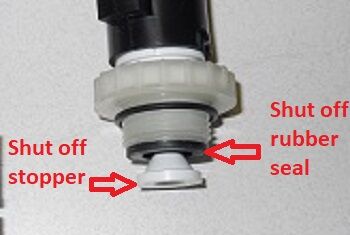
If you do find that you have let your Kinetico water softener run out of salt, add a few bags of salt and then avoid using any water for at least 2 hours to allow any dirt that got stirred up by adding the salt to settle down to the bottom of the brine tank.
By avoiding the use of water for at least 2 hours after adding salt to your empty Kinetico brine tank, your Kinetico water softener will NOT regenerate which could draw stirred-up dirt into the shut-off valve or the control valve.
STEP 2: Only Use Very Pure Salt In Your Kinetico Water Softener.
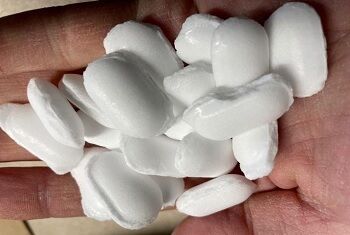
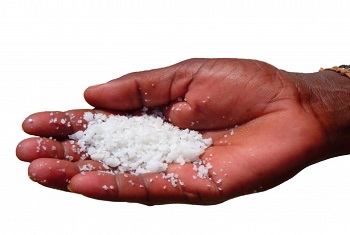
To minimize the chance of salt bridges forming and your brine tank overflowing, I recommend using water softener “Pellets” or “SOLAR Crystal” salt.
Solar salt is made by evaporating salt water and letting it re-crystallize into very pure pieces of salt. Since solar salt is very pure, there is less chance of any dirt being in the bag that it comes in.
Pellet salt is very similar to solar salt as it is very pure and free of debris. The disadvantage of using pellet salt is that it contains a binder to hold its pellet shape.
When the salt in the pellet dissolves away, this binder settles to the bottom of the brine tank and builds up over time.
Eventually, this build-up of the binding agent will create a slab of binder which can prevent the water softener from getting the correct dose of brine because the binder has taken up space where salt should be.
Once this undissolved build-up has been removed, your Kinetico water softener will be fine but it can often be difficult to remove and you may need to (VERY CAREFULLY) break up the build-up with a chisel or screwdriver to remove it.
So if you have a Kinetico water softener, I highly recommend using water softener solar or pellet salt, and NEVER let your water softener run out of salt.
STEP 3: Clean The Walls Of Your Brine Tank Every Time You Add Salt.
Dirt and other debris can cling to the walls of a brine tank, especially at the waterline.
When floating dirt settles on the tank walls, it is very easy to remove, and not removing it from your brine tank can allow it to fall to the bottom of your brine tank where it could get drawn into the brine float shut-off, or into water softener control valve.
Not only can dirt cause the brine float shut-off to fail, but it could also get lodged in one of the delicately balanced gears inside of a Kinetico control valve.
The gears and impellers inside of the Kinetico control valve must spin freely or the water softener will not operate.
A simple speck of dirt jammed in one of the valves’ gears could mean hard water damage to the water fixtures of your home, including permanent build-up in your hot water heater, and it will likely mean an expensive repair bill.
STEP 4: Change Your Kinetico Water Softener Pre-Filter Regularly.
Unlike most electric water softeners, a Kinetico water softener is very susceptible to malfunctions due to debris entering the systems control valve because the Kinetico control valve works primarily on delicate gears and valves that can jam or malfunction if any debris gets caught in them.
This is why I always recommend installing a sediment pre-filter before any Kinetico water system. Even if you have never seen any dirt or debris in your well water, having a sediment pre-filter before a Kinetico water system is a very good idea.
Kinetico offers their own unique sediment filter that ONLY uses a special type cartridge that is ONLY available through Kinetico authorized dealers.
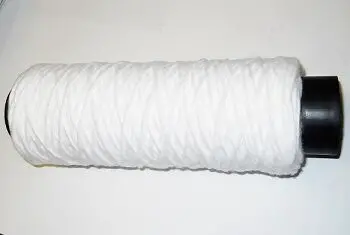
You don’t have to use a Kinetico brand water-sediment prefilter for your Kinetico water softener, a standard water-sediment prefilter will work just fine and the replacement filter cartridges are often less expensive and easier to come by than the Kinetico brand filter cartridges.
Even if you get your water from a municipal water supplier, there can be occasional sediment coming in with your water.
Also, municipal water does not mean that there is never any work on the municipal water pipes, or there can’t be a water pipe break. And if a water pipe breaks and lets dirt or any sediment get into your Kinetico control valve, you could be looking at a pricey repair bill, if not a whole new system.
STEP 5: Check Your Kinetico Water Softener Bypass A Few Times A Year.
Kinetico water softeners use a few different types of bypasses to divert water from going through your water softener. They are all designed to do the same thing, but they work in slightly different ways.
A “Grey”, Single Handle Kinetico Bypass:
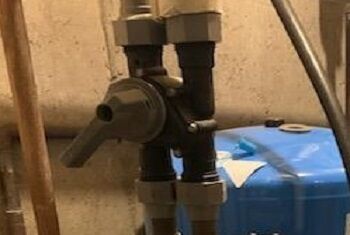
If you have an older Kinetico water softener, your bypass may have a grey handle on it that turns clockwise and counter-clockwise.
If you have not used this bypass handle for a long time, it may be very hard to turn and you may need to shut off the water to your Kinetico water softener to relieve the water pressure in order to turn it.
I don’t recommend using this type of bypass unless you have to because they can often leak when turned.
If you have a bypass of this type, I recommend installing a separate, three-valve bypass before it and removing the Kinetico bypass valve entirely.
This involves two shut-off valves (that are normally on), going to and from the water softener and a third valve (that is normally off), between the other two to allow water to go through your water softener.
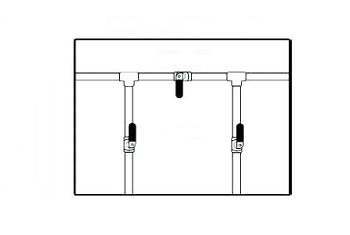
Then if you need to bypass your water softener, simply shut off the two valves that go to and from the softener, and turn on the one in the middle to allow water to go to the home.
A Black Two-Handed Kinetico “Mach” Bypass:
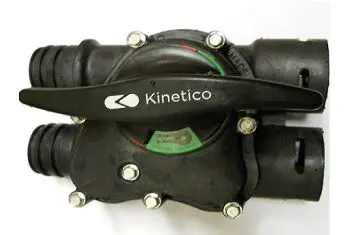
This is a very reliable bypass that can turn either way to different positions. The bypass will either point to or show a green color inside of its window when the system is in normal service.
There is also a yellow position to put your water system into bypass and a red position that will shut off your water completely.
It is good to rotate this handle a few times a year to keep it operating smoothly for when it is needed. Just use both hands, rotate it all the way around to the right, and then to the left, and bring it back to the green (in-service)position.
A Kinetico Slider (BAR) Bypass:
This is a simple push one way or the other bypass valve.
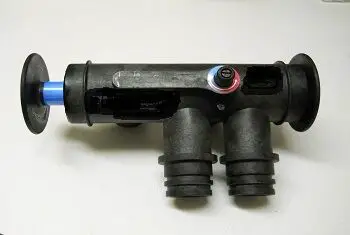
You push in the red side to expose the blue-colored side to get treated water, or press in the blue-colored side to expose the red side to bypass the water softener.
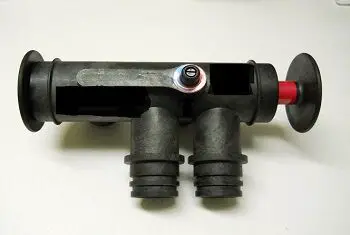
Just move the lever back and forth a few times to keep it working smoothly.
Although the slider bypass can leak after many years, if you have worked it back and forth regularly, the chances of it leaking become less, and it will move easier when you really need it to.
I recommend working your Kinetico bypass at least four times a year, to keep it working smoothly. The first day of each season is a good way to remind you to work your bypass.
Do it on the first day of spring, summer, fall, and winter, and it should work well for many years.
STEP 6: Add Some Water Softener Resin Cleaner Once A Year.
Kinetico uses smaller tanks than standard water softeners, and in order to make their smaller tank size work more efficiently, Kinetico fills their resin tank nearly to the very top of the tank.
They use a basket-type screen to hold the resin in the tank, because of this, the resin does not get fluffed up like a standard water softener.
By lifting the resin and fluffing it, a standard water softener ensures that all the resin gets used evenly.
Kinetico water softeners disperse the water flowing through the tanks to make use of all of the resin, but the resin does not get moved around very much.
To help prevent any build-up of hardness inside of the resin tank, I recommend using a dose of water softening resin cleaner once a year.
You can get it HERE on Amazon
Simply Pour 4 Ounces Of Resin Cleaner In Your Kinetico Water Softener Brine Tank, And That’s It.
STEP 7: Attach An Overflow Line To The Brine Tank.

This is more of a recommendation than required maintenance but I do HIGHLY recommend it!
This tip is very easy and is very important if your Kinetico water softener is in the finished area of your home.
On the side of your Kinetico salt tank, you will see a small white overflow fitting. This fitting is there so you can connect an overflow drain hose, and run it to a floor drain or other drainage area.
The reason that I recommend doing this for a Kinetico water softener is that the Kinetico water softener uses a float controlled water shut-off to control how much water goes into the systems’ salt tank, and if a little dirt or sediment gets into the shut-off seal, the system will continue to fill the salt tank, and it will overflow out of this fitting.
STEP 8: Consider A Water Leak Detector If Your Kinetico Water Softener Is Located In A Finished Area Of Your Home.
You can get it HERE on Amazon
Although water leaks and brine tank overflows are uncommon, they can happen without notice and can cause significant damage to your home. Your home is very important to you and should be protected by potential flooding.
Since your water softener is most likely located next to your other water appliances, it is a perfect area to protect with a “Water Flood Detector”.
Having a “Water Flood Detector” near your water softener will alert you to water flooding due to your Kinetico water softener or any other water problems.


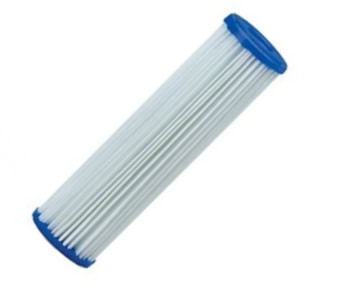


I have been doing my own servicing on our Kinetico system for a few months now. I believe the salt usage has increased substantially, (I use around 1.5 bags weekly) and I would like to know if; 1.) there is a setpoint or some other action that determines the frequency of salt access, and if so, 2.) Is it resettable, and/or 3.) Is it possible that in my normal servicing, I have changed something that determines that frequency without realizing it? Our household consists of 3 people bathing daily, and probably averaging 7-8 washloads per week. We do not use a dishwasher. My normal maintenance consists of removal and cleaning of the prefilter, wiping the salt tank down. If the salt ever does run out, I refill it and immediately start a regenerate cycle, (as recommended by technicians installing our system). Thanks in advance for your help.
Hello Mr. Rivera and thank you for the question.
Providing that you have a non-electric Kinetico water softener, the frequency of the regeneration is determined by a disc inside of the control valve and it cannot be adjusted.
If your non-electric Kinetico water softener is using more salt than it used to, it is detecting that you are using more water than you were before.
If your daily use of water by the people in the home has not changed, you may be using water elsewhere in the home.
Check for leaking toilets, sinks, and outside hoses.
The salt dose is determined by the height of the brine float which is in the brine tube in your brine tank. I do not recommend that you remove or adjust the float yourself as it normally should be in the correct position.
But the brine float can gradually move up over time. If your system is several years old, you may need to call your Kinetico dealer to have it serviced by a technician that will be able to determine the correct height of the float.
NEVER let a non-electric Kinetico water softener run out of salt!
When you add salt to an empty Kinetico brine tank, you will stir up dirt and debris that has settled at the bottom of the tank. This dirt and debris can get lodged in the shut-off of the brine float assembly which can cause the system to continue to fill the brine tank until the brine tank OVERFLOWS.
If you ever have to add salt to an empty non-electric Kinetico brine tank, do not use any water in the home for a few hours to allow dirt and debris to settle back to the bottom of the tank and check the brine tank for rising water several times for the next few days to make sure that it is shutting off correctly.
Keep cleaning your pre-filter regularly and wipe down the sides of the brine tank with a damp cloth before you add salt to the tank. If you find that your salt usage stays high without finding that there is more water being used in the home, you may want to have the system serviced by a trained Kinetico service person.
I hope this was helpful.
Paul